Blue Origin Rolls Out Test Article For Next-Gen Rocket
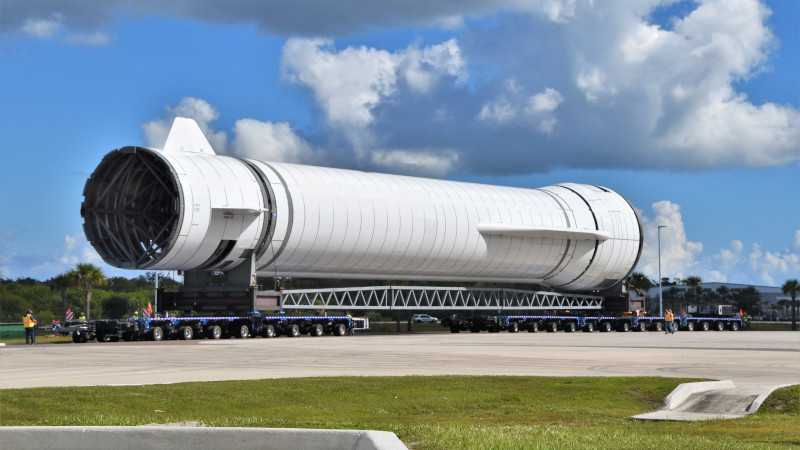
By any metric you care to use, this is a very exciting time for America’s space program. NASA is refocusing their efforts towards the Moon and beyond, SpaceX is launching routine crew and cargo flights to the International Space Station with reusable rockets, and if you’ve got deep enough pockets, there are now multiple companies offering suborbital pleasure trips requiring little more than a few hours worth of training. It’s taken longer than many people had hoped, but it seems we’re finally making the confident strides necessary to truly utilize space’s vast resources.
But things are just getting started. A new generation of massive reusable rockets are currently being developed, which promise to make access to space cheaper and faster than ever before. We’ve seen quite a bit of SpaceX’s Starship, thanks in no small part to the dramatic test flights that the media-savvy company has been regularly live streaming to YouTube. But Blue Origin, founded by Amazon’s Jeff Bezos, has been far more secretive about their New Glenn. That is, until now.
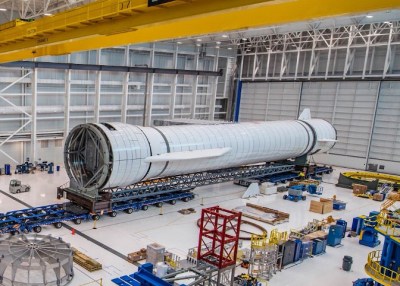
On November 8th, Blue Origin rolled out their GS1 simulator for the New Glenn’s first stage. This stand-in for the real rocket will never fly, but it’s designed to perfectly recreate the dimensions, center of gravity, and mass, of the real thing. Ground teams will use the GS1 to practice safely transporting the booster, which is approximately half the length of the Saturn V, from their production facility to Launch Complex 36 (LC-36) at Cape Canaveral. It will also be used to test the fit and function of various pieces of ground support equipment, and eventually, the second stage stacking procedure.
For the uninitiated, it might seem like this is a lot of fuss over what’s ultimately just a hollow metal tube. But the introduction of a test article such as this has traditionally been a major milestone during the design and construction of rockets and spacecraft, dating back to the “boilerplate” test capsules used during the Mercury, Gemini, and Apollo programs; a sure sign that what was just an idea is now becoming a reality.
Practice Makes Perfect

As anyone who’s worked on a project with many moving parts knows, sketches on paper or CAD models on the screen will only get you so far. Eventually you’ve got to commit your design, or at least some subset of it, to physical hardware to make sure your components fit and interact in the way you expect. This concept is even more critical when talking about something as monstrously complex as an orbital booster or human-rated spacecraft.
NASA created many test capsules in the early days of their manned space program, which ranged in complexity from inert mass simulators to instrument-laden craft that were actually launched into orbit to collect data on vehicle performance or the space environment. After all, in those early days, there were far more questions than answers. Without the luxury of modern simulation technology, building and flying a dummy capsule was the only real option.
By some accounts, there were at least 50 test capsules constructed for the Apollo program alone. Many of these bore little resemblance to the final Command Module that took the astronauts to the Moon, but that wasn’t always the point. Conversely, some were so accurate internally that they were used for astronaut training. While a large number of these capsules have survived into the present day, and can be found in museums all over the United States, several were either destroyed or otherwise lost during testing. Some ended up being cut up for scrap, or rebuilt and reused for another experiment.
Some Assembly Required
By the time the Space Shuttle development program was in full swing, the state-of-the-art had improved considerably. NASA was far more confident in their ability to simulate the behavior of the vehicle, to the point that there was famously no test flight of the complete Shuttle “stack” before John Young and Robert Crippen rode Columbia to space on April 12th, 1981.
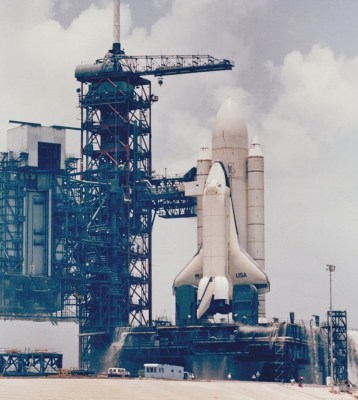
But that’s not to say they didn’t have some help leading up to the first crewed launch. NASA ran an extensive series of Approach and Landing Tests (ALTs) using the Enterprise, a prototype orbiter that was originally intended to be retrofitted for spaceflight until it was determined that it would actually be cheaper to build Challenger from scratch due to changes in the final vehicle design.
These flight tests, which saw the Enterprise dropped from the iconic Boeing 747 Shuttle Carrier Aircraft (SCA), were designed to characterize how the orbiter would handle while gliding back down to Earth after reentering the atmosphere. When the ALT program was complete, Enterprise went on tour to several NASA facilities for further testing.
It underwent vibratory tests at Marshall Space Flight Center, and later traveled to Kennedy Space Center so it could be used to verify stacking procedures in the Vehicle Assembly Building. Eventually, it even made its way to the launchpad at LC-39 where it was mated to dummy versions of the External Tank and Solid Rocket Boosters (SRBs) for fit checks with the Shuttle’s extensive Ground Support Equipment (GSE).
Though Enterprise is certainly the most well-known “dummy” Space Shuttle, it’s not the only one. NASA also produced Pathfinder, a test article not unlike Blue Origin’s GS1. Made partially out of wood, this inert stand-in for the orbiter was used for less critical training and testing applications.
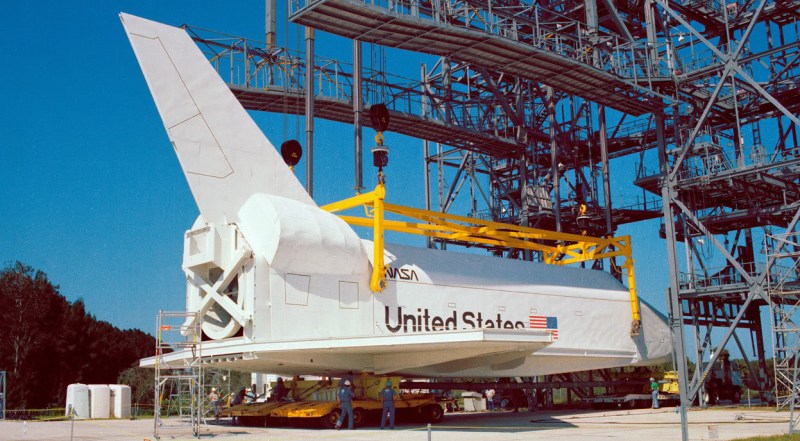
One Small Step, No Giant Leap
Clearly, Blue Origin’s GS1 is in good company as far as the history of American spaceflight is concerned, and it’s an excellent sign that the company is making progress with their long-delayed rocket. But while the company would undoubtedly like the press to see this public display of a completed test article as evidence that New Glenn is nearing operational status, the reality is less exciting.
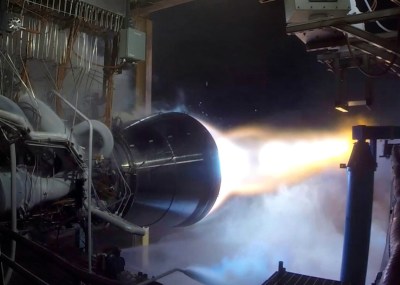
Even if Blue Origin has already built a flight-ready New Glenn, of which there is currently no evidence, the company has yet to complete work on the BE-4 engines that would power the heavy-lift vehicle. These are the very same engines that United Launch Alliance has been waiting on to install into their prototype Vulcan rocket. With two flagship launch vehicles literally unable to get off the ground until the BE-4 is operational, there’s enormous pressure on Blue Origin to deliver an engine that’s already at least four years behind schedule.
The lack of main engines is bad enough, but there’s also uncertainty surrounding the second stage of the New Glenn vehicle. The original plan was for the upper stage of the rocket to be expendable, with only the first stage landing on an ocean-going platform for refurbishment and eventual reflight; closely following the reuse program of the SpaceX Falcon 9 rocket. But over the summer it was revealed that Blue Origin intended to design a reusable second stage in an effort to lower operational costs and bring their capabilities better in line with SpaceX’s Starship. With so many missing pieces this late in the game, it seems likely that even in the best case scenario, New Glenn is still several years away from entering operational status.
Post a Comment